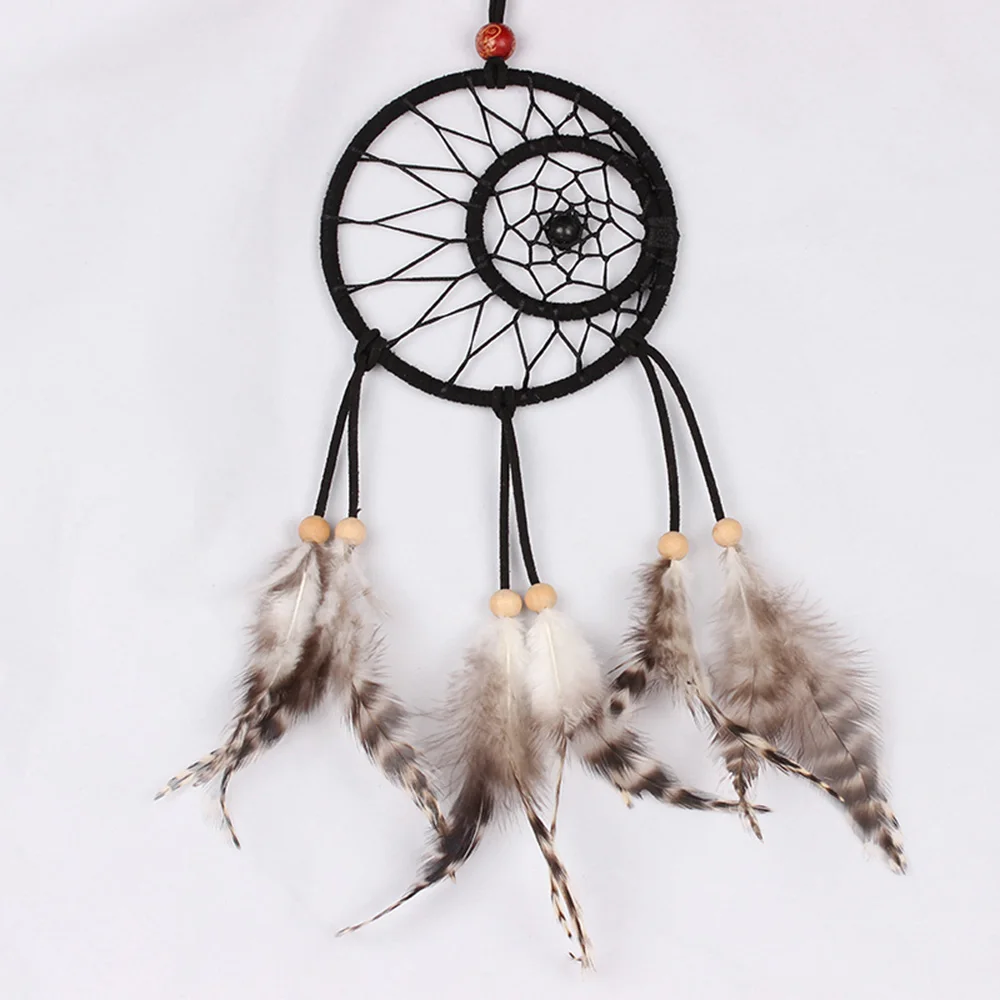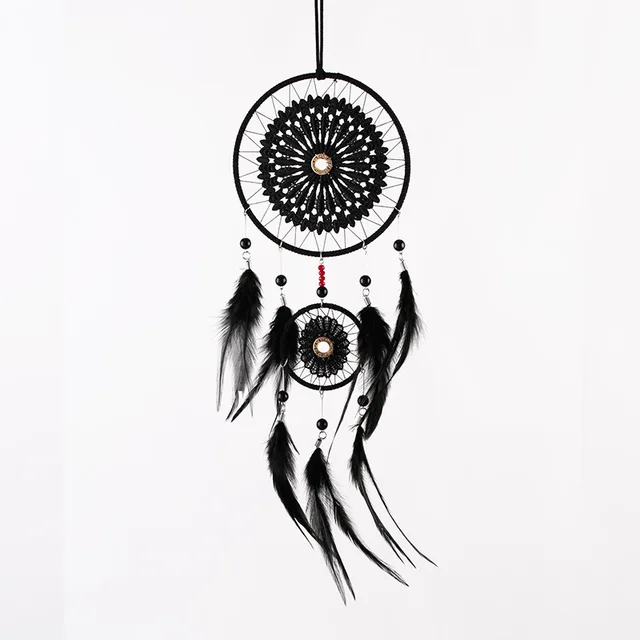Double Dream Catcher
Looking for wedding gift idea / wedding decoration? DIY heart to heart dreamcatcher. This is also a perfect anniversary gift or valentines gift for your lov. Double Decker Bus Dream Interpretation and Meaning: To see a double decker bus in your dream recommends that you have to consider options to your mindset.Don't take a gander at the circumstance or issue from a.
by K Shabi PUBLISHED 14 July 2016
What is the true meaning and history behind the Native American dreamcatcher? Where do dreamcatchers really come from? You've probably seen a dream catcher hanging from a tree, a porch or even in a souvenir gift shop and wondered about its purpose and meaning. Read on to learn more about the story, legend, and origins of authentic Native American dream catchers.
Authentic Native American Dream Catchers
Originally created by American Indians, dreamcatchers today come in a variety of different sizes and styles. They usually consist of a small wooden hoop covered in a net or web of natural fibers, with meaningful sacred items like feathers and beads attached, hanging down from the bottom of the hoop. Real authentic, traditional dream catchers are handmade and crafted only from all natural materials, in size measuring just a few small inches across. The hoop is traditionally constructed from a bent Red Willow branch covered in stretched sinews. Wrapping the frame in leather is another common finishing touch among 'real' dream catchers.


History of the Dreamcatcher: Ojibwe or Lakota Origins?
Today the dreamcatcher is associated with Native American culture in general, but dream catchers are often believed to have originated from the Ojibwa Chippewa tribe in particular. The Lakota tribe also has its own legend about the origins of the dreamcatcher, but most ethnographers believe the dreamcatchers were passed down from the Ojibwe through intermarriage and trade. The Ojibwe word for dreamcatcher asabikeshiinh actually means 'spider,' referring to the woven web loosely covering the hoop. The patterns of the dream catcher web are similar to the webbing these Native Americans also used for making snowshoes.
Ojibwa Legend: The story of the Dream catcher

Ancient legends about the history and origin of the dreamcatcher exist among several Native American tribes, but are most common and seem to originate among the Ojibwe and Lakota nations. While many cultures consider spiders to be creepy crawlers, the Ojibwe people saw them in a different light, as symbols of protection and comfort. According to an old Ojibwa legend, a mystical and maternal 'Spider Woman' once served as the spiritual protector for her tribe, especially in concern to young children, kids and babies. As the Ojibwe people flourished and spread out across the land, it was difficult for The Spider Woman to continue to protect and watch over all the members of the tribe as they migrated farther and farther away. This is why she created the first dreamcatcher. Following her example, over the course of generations mothers and grandmothers continued to ritualistically recreate the maternal keepsake as a means of mystically protecting their children and families even from a distance.
What do dream catchers do? Purpose & Meaning of the Dream Catcher
Sometimes referred to as 'Sacred Hoops,' Ojibwe dreamcatchers were traditionally used as talismans to protect sleeping people, usually children, from bad dreams and nightmares. This Native American tribe believes that the night air is filled with dreams, both good and bad. When hung above the bed in a place where the morning sunlight can hit it, the dream catcher attracts and catches all sorts of dreams and thoughts into its webs. Good dreams pass through and gently slide down the feathers to comfort the sleeper below. Bad dreams, however, are caught up in its protective net and destroyed, burned up in the light of day.
Dream Catcher Meaning: Web, Feathers & Beads
All parts of the authentic Native American dreamcatcher have meaning tied to the natural world. The shape of the dreamcatcher is a circle because it represents the circle of life and how forces like the sun and moon travel each day and night across the sky. The dream catcher web catches the bad dreams during the night and dispose of them when the day comes. As for the good dreams, the feathers act as a fluffy, pillow-like ladder that allows them to gently descend upon the sleeping person undisturbed. There is some contention when it comes to the meaning of the beads that often decorate the dreamcatcher. According to some American Indians, the beads symbolize the spider—the web weaver itself. Others believe the beads symbolize the good dreams that could not pass through the web, immortalized in the form of sacred charms.
Dreamcatcher Meaning Today: Authentic Symbol or Cultural Appropriation?
Though dreamcatchers are quite common, finding real authentic dreamcatchers is not that easy today. Real handmade dream catchers are usually small in size and feature sacred charms like feathers and beads. Many dreamcatchers for sale today, however, are much more American than Native American, often oversized and constructed from cheap plastic materials. Many Native Americans still consider the dreamcatcher to be a long-standing cultural symbol of unity and identification among the many Indian Nations and First Nations cultures. Sadly, many other Native Americans have come to see dream catchers as just another cultural appropriation, over-commercialized and at times offensively misappropriated and misused by non-Natives.
filed under: culture, symbol
In some Native American and First Nations cultures, a dreamcatcher or dream catcher (Ojibwe: asabikeshiinh, the inanimate form of the word for 'spider')[1] is a handmade willow hoop, on which is woven a net or web. The dreamcatcher may also include sacred items such as certain feathers or beads. Traditionally they are often hung over a cradle as protection.[2] It originates in Anishinaabe culture as the 'spider web charm' (Anishinaabe: asubakacin 'net-like', White Earth Band; bwaajige ngwaagan 'dream snare', Curve Lake Band[3]), a hoop with woven string or sinew meant to replicate a spider's web, used as a protective charm for infants.[2]
Dreamcatchers were adopted in the Pan-Indian Movement of the 1960s and 1970s and gained popularity as a widely marketed 'Native crafts items' in the 1980s. [4]
Ojibwe origin[edit]
Ethnographer Frances Densmore in 1929 recorded an Ojibwe legend according to which the 'spiderwebs' protective charms originate with Spider Woman, known as Asibikaashi; who takes care of the children and the people on the land. As the Ojibwe Nation spread to the corners of North America it became difficult for Asibikaashi to reach all the children.[2] So the mothers and grandmothers weave webs for the children, using willow hoops and sinew, or cordage made from plants. The purpose of these charms is apotropaic and not explicitly connected with dreams:
Even infants were provided with protective charms. Examples of these are the 'spiderwebs' hung on the hoop of a cradle board. In old times this netting was made of nettle fiber. Two spider webs were usually hung on the hoop, and it was said that they 'caught any harm that might be in the air as a spider's web catches and holds whatever comes in contact with it.'[2]
Basil Johnston, an elder from Neyaashiinigmiing, in his Ojibway Heritage (1976) gives the story of Spider (Ojibwe: asabikeshiinh, 'little net maker') as a trickster figure catching Snake in his web.[5][clarification needed]
Modern uses[edit]
While Dreamcatchers continue to be used in a traditional manner in their communities and cultures of origin, a derivative form of 'dreamcatchers' were also adopted into the Pan-Indian Movement of the 1960s and 1970s as a symbol of unity among the various Native American cultures, or a general symbol of identification with Native American or First Nations cultures.[4]
The name 'dream catcher' was published in mainstream, non-Native media in the 1970s[6] and became widely known as a 'Native crafts item' by the 1980s,[7]by the early 1990s 'one of the most popular and marketable' ones.[8]
In the course of becoming popular outside the Ojibwe Nation during the Pan-Native movement in the '60s, various types of 'dreamcatchers', many of which bear little resemblance to traditional styles, and that incorporate materials that would not be traditionally used, are now made, exhibited, and sold by New age groups and individuals. Some Native Americans have come to see these 'dreamcatchers' as over-commercialized, like 'sort of the Indian equivalent of a tacky plastic Jesus hanging in your truck,' while others find it a loving tradition or symbol of native unity. [4]
A mounted and framed dreamcatcher is being used as a shared symbol of hope and healing by the Little Thunderbirds Drum and Dance Troupe from the Red Lake Indian Reservation in Minnesota. In recognition of the shared trauma and loss experienced, both at their school during the Red Lake shootings, and by other students who have survived similar school shootings, they have traveled to other schools to meet with students, share songs and stories, and gift them with the dreamcatcher. The dreamcatcher has now been passed from Red Lake to students at Columbine CO, to Sandy Hook CT, to Marysville WA, to Townville SC, to Parkland FL.[9][10][11]
See also[edit]
Dream Catchers For Sale
References[edit]
- ^'Free English-Ojibwe dictionary and translator - FREELANG'. www.freelang.net.
- ^ abcdDensmore, Frances (1929, 1979) Chippewa Customs. Minn. Hist. Soc. Press; pg. 113.
- ^Jim Great Elk Waters, View from the Medicine Lodge (2002), p. 111.
- ^ abc'During the pan-Indian movement in the 60's and 70's, Ojibway dreamcatchers started to get popular in other Native American tribes, even those in disparate places like the Cherokee, Lakota, and Navajo.' 'Native American Dream catchers', Native-Languages
- ^John Borrows, 'Foreword' to Françoise Dussart, Sylvie Poirier, Entangled Territorialities: Negotiating Indigenous Lands in australia and Canada, University of Toronto Press, 2017.
- ^'a hoop laced to resemble a cobweb is one of Andrea Petersen's prize possessions. It is a 'dream catcher'—hung over a Chippewa Indian infant's cradle to keep bad dreams from passing through. 'I hope I can help my students become dream catchers,' she says of the 16 children in her class. In a two-room log cabin elementary school on a Chippewa reservation in Grand Portage' The Ladies' Home Journal 94 (1977), p. 14.
- ^'Audrey Speich will be showing Indian Beading, Birch Bark Work, and Quill Work. She will also demonstrate the making of Dream Catchers and Medicine Bags.' The Society Newsletter (1985), p. 31.
- ^Terry Lusty (2001). 'Where did the Ojibwe dream catcher come from? Windspeaker - AMMSA'. www.ammsa.com. Sweetgrass; volume 8, issue 4: The Aboriginal Multi-Media Society. p. 19.CS1 maint: location (link)
- ^Marysville School District receives dreamcatcher given to Columbine survivors By Brandi N. Montreuil, Tulalip News. Posted on November 7, 2014
- ^'Showing Newtown they're not alone - CNN Video' – via edition.cnn.com.
- ^Dreamcatcher for school shooting survivors (paywall)
Where To Purchase Dream Catchers
External links[edit]
| Wikimedia Commons has media related to Dreamcatcher. |



